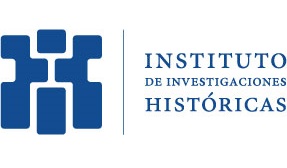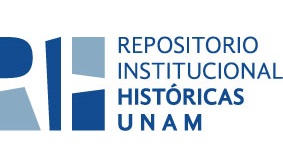Consulte el registro sencillo del ítem
The wind god and the descente of the Tzitzimitl: new insights on the iconography and provenance of the mosaic-encrusted bird head at the Friedenstein palace gotha, Germany
| dc.contributor.author | Dupey García, Élodie |
| dc.contributor.author | Domenici, Davide |
| dc.date.accessioned | 24/06/2024 23:13 |
| dc.date.available | 24/06/2024 23:13 |
| dc.date.issued | 2023 |
| dc.identifier.uri | http://hdl.handle.net/20.500.12525/3113 |
| dc.description.abstract | "The Friedenstein Palace in Gotha, Germany, holds a Late Postclassic Mesoamerican bird head sculpture made of wood encrusted with precious stone and shell mosaic. Although known since the nineteenth century, scholars have not given the artifact the attention it deserves. Based on observations made during a thorough in situ inspection, we provide a detailed description of the object, stressing both technological and aesthetic aspects, documented through new photos and reconstructive drawings prepared by Nicolas Latsanopoulos. Then, we offer an interpretation of the artifact's iconography, demonstrating it should be understood as a representation of the Wind God in its manifestation as a Tzitzimitl, a category of deities associated with creation and destruction; an aspect made evident in the small figure adorning the avian forehead. We finally reconstruct the collection history of the object, suggesting that the Giustiniani family, a prominent Roman noble family renowned for its collecting activities, once owned the sculpture; in turn, this proposal might imply that the Dominican friar Domingo de Betanzos brought the mosaic to Italy in 1532 and that it might be originally from the Puebla-Tlaxcala Valley or, more broadly, from the south-central area of the modern state of Puebla." |
| dc.description.abstract | El Palacio Friedenstein en Gotha, Alemania, alberga una escultura Mesoamericana del Posclásico Tardío en forma de cabeza de ave. Hecha de madera, está incrustada con mosaicos de piedras preciosas y conchas. Aunque conocida desde el siglo XIX, los estudiosos no le han dado al artefacto la atención que merece. Basándonos en observaciones realizadas durante una inspección exhaustiva in situ, proporcionamos una descripción detallada del objeto, enfatizando tanto los aspectos tecnológicos como los estéticos, documentados a través de nuevas fotos y dibujos reconstructivos preparados por Nicolas Latsanopoulos. Luego, ofrecemos una interpretación de la iconografía del artefacto, demostrando que debe entenderse como una representación del Dios del Viento en su manifestación como Tzitzimitl, una categoría de deidades asociadas a la creación y la destrucción; aspecto que se evidencia en la pequeña figura que adorna la frente del ave. Finalmente, reconstruimos la historia de la colección del objeto, sugiriendo que la familia Giustiniani, una prominente familia noble romana reconocida por sus actividades de coleccionismo, alguna vez poseyó la escultura; a su vez, esta propuesta podría implicar que el fraile dominico Domingo de Betanzos llevó el mosaico a Italia en 1532 y que podría ser originario del Valle de Puebla-Tlaxcala o, más ampliamente, de la zona centro-sur del estado moderno de Puebla. |
| dc.format | |
| dc.format.extent | 2426 KB |
| dc.format.extent | p. 474-499 |
| dc.language.iso | eng |
| dc.publisher | Cambridge University Press |
| dc.rights.uri | http://creativecommons.org/licenses/by/4.0 |
| dc.source | Ancient Mesoamerica, 33, 3 (2022) https://www.cambridge.org/core/journals/ancient-mesoamerica/issue/1E994FF502693CBE7BB8F0662C554328 |
| dc.title | The wind god and the descente of the Tzitzimitl: new insights on the iconography and provenance of the mosaic-encrusted bird head at the Friedenstein palace gotha, Germany |
| dc.type | Artículo |
| dcterms.bibliographicCitation | Dupey García, Élodie y Davide Domenici. "The wind god and the descente of the Tzitzimitl: new insights on the iconography and provenance of the mosaic-encrusted bird head at the Friedenstein palace gotha, Germany". Ancient Mesoamerica 33, 3 (2022): p. 474-499. http://hdl.handle.net/20.500.12525/3113 |
| dc.rights.holder | Cambridge University Press |
| dc.subject.keywords | culto estatal mexica |
| dc.subject.keywords | cosmovisión |
| dc.subject.keywords | astronomía |
| dc.subject.keywords | arqueología |
| dc.subject.keywords | agricultura |
| dc.type.publicationversion | publishedVersion |
| dc.audience | students |
| dc.audience | researchers |
| dc.audience | teachers |
| dc.rights.access | openAccess |
| dc.relation.alternativeidentifier | https://doi.org/10.1017/S0956536120000504 |
Ficheros en el ítem
Este ítem aparece en la(s) siguiente(s) colección(ones)
Excepto si se señala otra cosa, la licencia del ítem se describe como http://creativecommons.org/licenses/by/4.0




